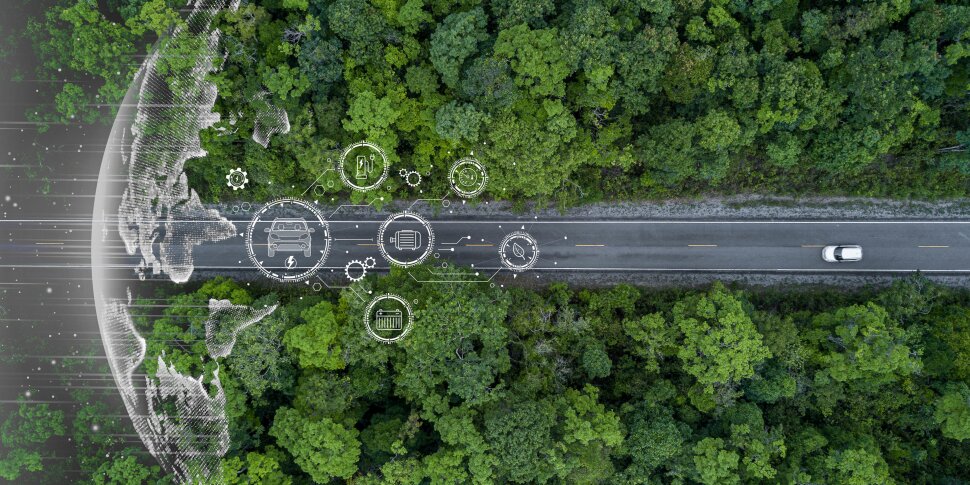Evaluating Household Hazardous Waste Generation, Composition, and Health Risks in an Urban Municipality
Downloads
Doi:10.28991/HEF-2024-05-03-011
Full Text:PDF
Downloads
Guerrero, L. A., Maas, G., & Hogland, W. (2013). Solid waste management challenges for cities in developing countries. Waste Management, 33(1), 220–232. doi:10.1016/j.wasman.2012.09.008.
Ferronato, N., & Torretta, V. (2019). Waste mismanagement in developing countries: A review of global issues. International Journal of Environmental Research and Public Health, 16(6), 1060. doi:10.3390/ijerph16061060.
Nasarani, G., Purnaweni, H., Maryono, M., & Surahman, N. (2024). The governance of Household Hazardous Waste (HHW): A literature review of HHW-related regulation in Southeast Asian developing countries. IOP Conference Series: Earth and Environmental Science, 1314(1), 12124. doi:10.1088/1755-1315/1314/1/012124.
Kumar, A., Thakur, A. K., Gaurav, G. K., Klemeš, J. J., Sandhwar, V. K., Pant, K. K., & Kumar, R. (2023). A critical review on sustainable hazardous waste management strategies: a step towards a circular economy. Environmental Science and Pollution Research, 30(48), 105030–105055. doi:10.1007/s11356-023-29511-8.
Ubachukwu, N. N., Mshelia, A. M., & Salihu, A. C. (2023). Spatial Pattern of Generation and Management of Household Hazardous Waste in Enugu Metropolis, Enugu, Nigeria. Journal of Science of the University of Kelaniya, 16(2), 77–94. doi:10.4038/josuk.v16i2.8082.
Zhou, Q. (2023). A Comparative Study of Household Solid Waste Regulations in Shanghai, Beijing, and Guangzhou. Journal of Education, Humanities and Social Sciences, 8, 1740–1748. doi:10.54097/ehss.v8i.4573.
Kaza, S., Yao, L.C., Bhada-Tata, P. and Van Woerden, F. (2018) What a Waste 2.0: A Global Snapshot of Solid Waste Management to 2050. Urban Development. World Bank, Washington, United States. doi:10.1596/978-1-4648-1329-0.
Arbastan, H. G., & Gitipour, S. (2020). Investigation of Seasonal Variation Effects on Household Hazardous Waste Composition and Generation Rate in Tehran and Proposing Environmental Solutions to Prevent and Reduce. Journal of Environmental Studies, 46(1), 103–120. doi:10.22059/JES.2020.79329.
Kummer, K. (2000). International Management of Hazardous Wastes: The Basel Convention and Related Legal Rules (Oxford Monographs in International Law). Oxford University Press, Oxford, United Kingdom.
M. Saleh, H., & B. Eskander, S. (2020). Introductory Chapter: Hazardous Wastes. Assessment and Management of Radioactive and Electronic Wastes, intechOpen, London, United Kingdom. doi:10.5772/intechopen.88600.
Tchobanoglous, G., & Kreith, F. (2002). Handbook of Solid Waste Management. McGraw-Hill Education, New York, United States.
Pollution Control Department. (2021). Thailand State of Pollution Report 2021. Ministry of National Resources and Environment. Bangkok, Thailand.
Amphalop, N., Suwantarat, N., Prueksasit, T., Yachusri, C., & Srithongouthai, S. (2020). Ecological risk assessment of arsenic, cadmium, copper, and lead contamination in soil in e-waste separating household area, Buriram province, Thailand. Environmental Science and Pollution Research, 27(35), 44396–44411. doi:10.1007/s11356-020-10325-x.
Atthirawong, W., & Luangpaiboon, P. (2022). Hazardous waste management system for Thailand's local administrative organization via route and location selection. Journal of the Air & Waste Management Association, 72(10), 1121–1136. doi:10.1080/10962247.2022.2110993.
Nakhon Si Thammarat Municipality. (2020). Annual Nakhon Si Thammarat Municipality Report 2020. Nakhon Si Thammarat Province, Thailand.
Chaiyarit, J., & Intarasaksit, P. (2021). Household hazardous waste characterization and quantification at source in Thailand. Journal of the Air & Waste Management Association, 71(8), 989–994. doi:10.1080/10962247.2021.1906355.
Cachada, A., Lopes, L. V., Hursthouse, A. S., Biasioli, M., Grčman, H., Otabbong, E., Davidson, C. M., & Duarte, A. C. (2009). The variability of polychlorinated biphenyls levels in urban soils from five European cities. Environmental Pollution, 157(2), 511–518. doi:10.1016/j.envpol.2008.09.002.
Devi, N. L., Yadav, I. C., Shihua, Q., Chakraborty, P., & Dan, Y. (2014). Distribution and risk assessment of polychlorinated biphenyls (PCBs) in the remote air and soil of Manipur, India. Environmental Earth Sciences, 72(10), 3955–3967. doi:10.1007/s12665-014-3284-8.
Zhang, Q., Ye, J., Chen, J., Xu, H., Wang, C., & Zhao, M. (2014). Risk assessment of polychlorinated biphenyls and heavy metals in soils of an abandoned e-waste site in China. Environmental Pollution, 185, 258–265. doi:10.1016/j.envpol.2013.11.003.
Zhou, H., Ouyang, T., Guo, Y., Peng, S., He, C., & Zhu, Z. (2022). Assessment of Soil Heavy Metal Pollution and Its Ecological Risk for City Parks, Vicinity of a Landfill, and an Industrial Area within Guangzhou, South China. Applied Sciences (Switzerland), 12(18), 9345. doi:10.3390/app12189345.
Ali, S. M., Pervaiz, A., Afzal, B., Hamid, N., & Yasmin, A. (2014). Open dumping of municipal solid waste and its hazardous impacts on soil and vegetation diversity at waste dumping sites of Islamabad city. Journal of King Saud University - Science, 26(1), 59–65. doi:10.1016/j.jksus.2013.08.003.
Gholampour Arbastan, H., & Gitipour, S. (2022). Evaluating the consequences of household hazardous waste diversion on public health and ecological risks of leachate exposure. International Journal of Environmental Science and Technology, 19(5), 4407–4420. doi:10.1007/s13762-022-04063-5.
USEPA Method 3050. (1996). Acid Digestion of Sediments, Sludges, and Soils. United State Environmental Protection Agency, Washington, United States.
Aydin, M. E., Ozcan, S., & Tor, A. (2007). Ultrasonic Solvent Extraction of Persistent Organic Pollutants from Airborne Particles. Clean – Soil, Air, Water, 35(6), 660–668. Portico. doi:10.1002/clen.200700049.
Dimitrova, A. D., Stoyanova, Y. P., & Tachev, A. K. (2014). Health risk assessment of polychlorinated biphenyls (PCBs) in urban soils of Sofia. International Journal of Biology and Biomedical Engineering, 8, 118–124.
Thongkaow, P., Prueksasit, T., & Siriwong, W. (2022). Activity-based exposure levels and lifetime cancer risk for workers exposed to polychlorinated biphenyls during electronic waste dismantling in Buriram province, Thailand. Atmospheric Environment, 287, 119289. doi:10.1016/j.atmosenv.2022.119289.
Method 8082A. (2007). Polychlorinated biphenyls (PCBs) by gas chromatography. United State Environmental Protection Agency, Washington, United States.
United State Environmental Protection Agency. (2021). Alternate PCB Extraction Methods and Amendments to PCB Cleanup and Disposal Regulations. National Centre for Environmental Assessment, Office of Research and Development, Washington, United States.
United State Environmental Protection Agency. (2000). Risk Characterization Handbook. National Centre for Environmental Assessment, Office of Research and Development, Washington, United States.
United State Environmental Protection Agency. (2001). Appendix C Risk Characterization Equations and Appendix Q Human Health Benchmarks. National Centre for Environmental Assessment, Office of Research and Development, Washington, United States.
United State Environmental Protection Agency. (2007). Framework for Metals Risk Assessment. National Centre for Environmental Assessment, Office of Research and Development, Washington, United States.
United State Environmental Protection Agency. (1997). Exposure Factors Handbook. National Centre for Environmental Assessment, Office of Research and Development, Washington, United States.
Gorman Ng, M., Davis, A., Van Tongeren, M., Cowie, H., & Semple, S. (2016). Inadvertent ingestion exposure: Hand-and object-to-mouth behavior among workers. Journal of Exposure Science and Environmental Epidemiology, 26(1), 9–16. doi:10.1038/jes.2014.71.
United State Environmental Protection Agency. (2011). Exposure Factors Handbook 2011 Edition. National Centre for Environmental Assessment, Office of Research and Development, Washington, United States.
United State Environmental Protection Agency. (1991). Risk Assessment Guidance for Superfund: Volume I – Human Health Evaluation Manual (Part B, Development of Risk-based Preliminary Remediation Goals). National Centre for Environmental Assessment, Office of Research and Development, Washington, United States.
United States Department of Energy. (2011). The Risk Assessment Information System (RAIS). U.S. Department of Energy's Oak Ridge Operations Office (ORO), Oak Ridge, United States.
United State Environmental Protection Agency. (2015). PCB Slope Factor. National Centre for Environmental Assessment, Office of Research and Development: Washington, United States.
Manggali, A. A., & Susanna, D. (2019). Current management of household hazardous waste (HHW) in the Asian region. Reviews on Environmental Health, 34(4), 415–426. doi:10.1515/reveh-2019-0049.
Gu, B., Zhu, W., Wang, H., Zhang, R., Liu, M., Chen, Y., Wu, Y., Yang, X., He, S., Cheng, R., Yang, J., & Bi, J. (2014). Household hazardous waste quantification, characterization and management in China's cities: A case study of Suzhou. Waste Management, 34(11), 2414–2423. doi:10.1016/j.wasman.2014.06.002.
Baldé, C. P., Kuehr, R., Yamamoto, T., McDonald, R., D'Angelo, E., Althaf, S., Bel, G., Deubzer, O., Fernandez-Cubillo, E., Gray, V., Herat, S., Honda, S., Iattoni, G., Khetriwal, D. S., Cortemiglia, V. L. di, Lobuntsova, Y., Nnorom, I., Pralat, N., & Wagner, M. (2024). Global E-waste Monitor 2024. International Telecommmunication Union (ITU) and United Nations Institute for Training and Research (UNITAR), Geneva, Switzerland. Available online: https://ewastemonitor.info/the-global-e-waste-monitor-2024/ (accessed on May 2024).
Ojeda-Benítez, S., Aguilar-Virgen, Q., Taboada-González, P., & Cruz-Sotelo, S. E. (2013). Household hazardous wastes as a potential source of pollution: A generation study. Waste Management & Research, 31(12), 1279–1284. doi:10.1177/0734242X13510057.
Kumar, V., Tyagi, S. K., Kumar Tyagi, S., Kumar, K., & Singh Parmar, R. (2023). Heavy metal-induced pollution in the environment through waste disposal. International Journal of Research Publication and Reviews, 4(7), 1205–1210.
Thailand National Environmental Board. (2021). Notification of the National Environmental Board: Soil Quality Standard 2021. The Prime Minister's Office. Bangkok, Thailand. (In Thai).
Kolawole, T. O., Iyiola, O., Ibrahim, H., & Isibor, R. A. (2023). Contamination, ecological and health risk assessments of potentially toxic elements in soil around a municipal solid waste disposal facility in Southwestern Nigeria. Journal of Trace Elements and Minerals, 5, 100083. doi:10.1016/j.jtemin.2023.100083.
Gu, Y.-G., Lin, Q., & Gao, Y.-P. (2016). Metals in exposed-lawn soils from 18 urban parks and its human health implications in southern China's largest city, Guangzhou. Journal of Cleaner Production, 115, 122–129. doi:10.1016/j.jclepro.2015.12.031.
Ankit, Saha, L., Kumar, V., Tiwari, J., Sweta, Rawat, S., Singh, J., & Bauddh, K. (2021). Electronic waste and their leachates impact on human health and environment: Global ecological threat and management. Environmental Technology & Innovation, 24, 102049. doi:10.1016/j.eti.2021.102049.
Cayumil, R., Khanna, R., Rajarao, R., Ikram-ul-Haq, M., Mukherjee, P. S., & Sahajwalla, V. (2016). Environmental Impact of Processing Electronic Waste – Key Issues and Challenges. E-Waste in Transition - From Pollution to Resource, IntechOpen, London, United Kingdom. doi:10.5772/64139.
Fatunsin, O. T., Chukwu, C. N., Folarin, B. T., & Olayinka, K. O. (2019). Polychlorinated biphenyls (PCBS) in soil samples from sites of different anthropogenic activities in Lagos, Nigeria. FUDMA Records of Chemical Sciences, 1(3), 65-71.
- The authors retain all copyrights. It is noticeable that authors will not be forced to sign any copyright transfer agreements.
- This work (including HTML and PDF Files) is licensed under a Creative Commons Attribution 4.0 International License.















